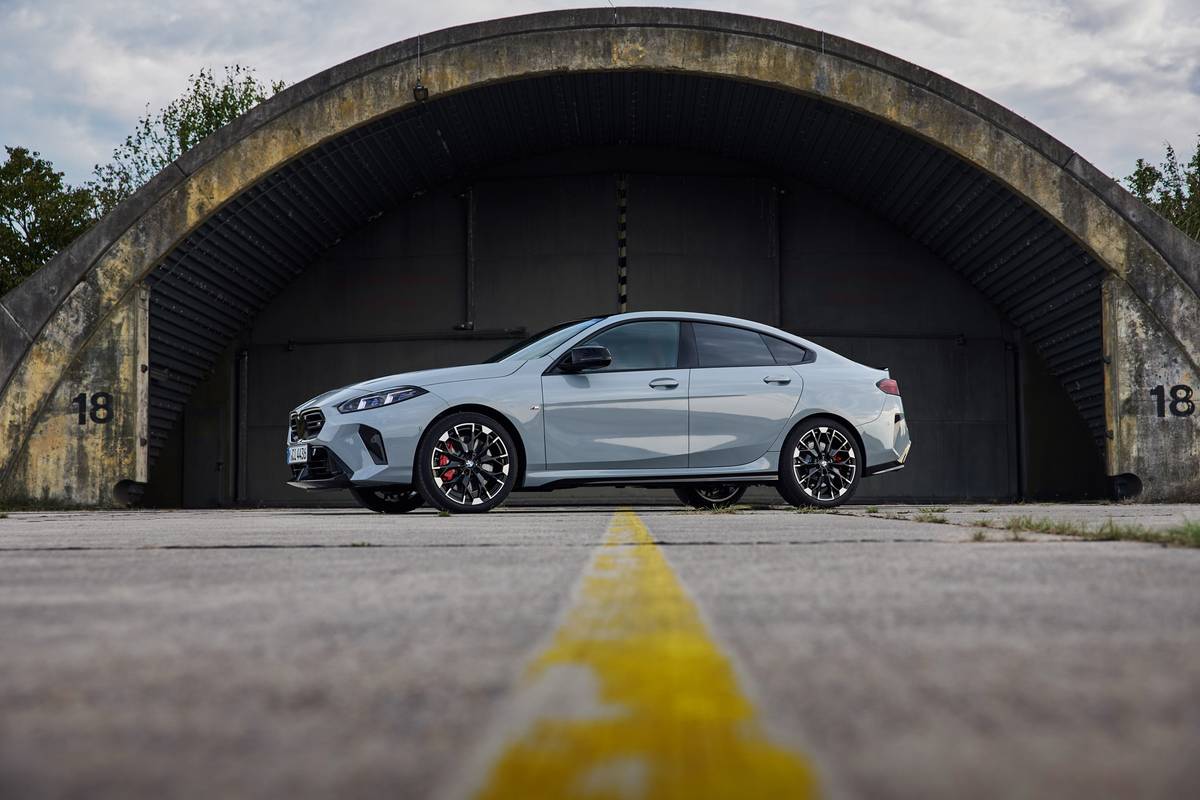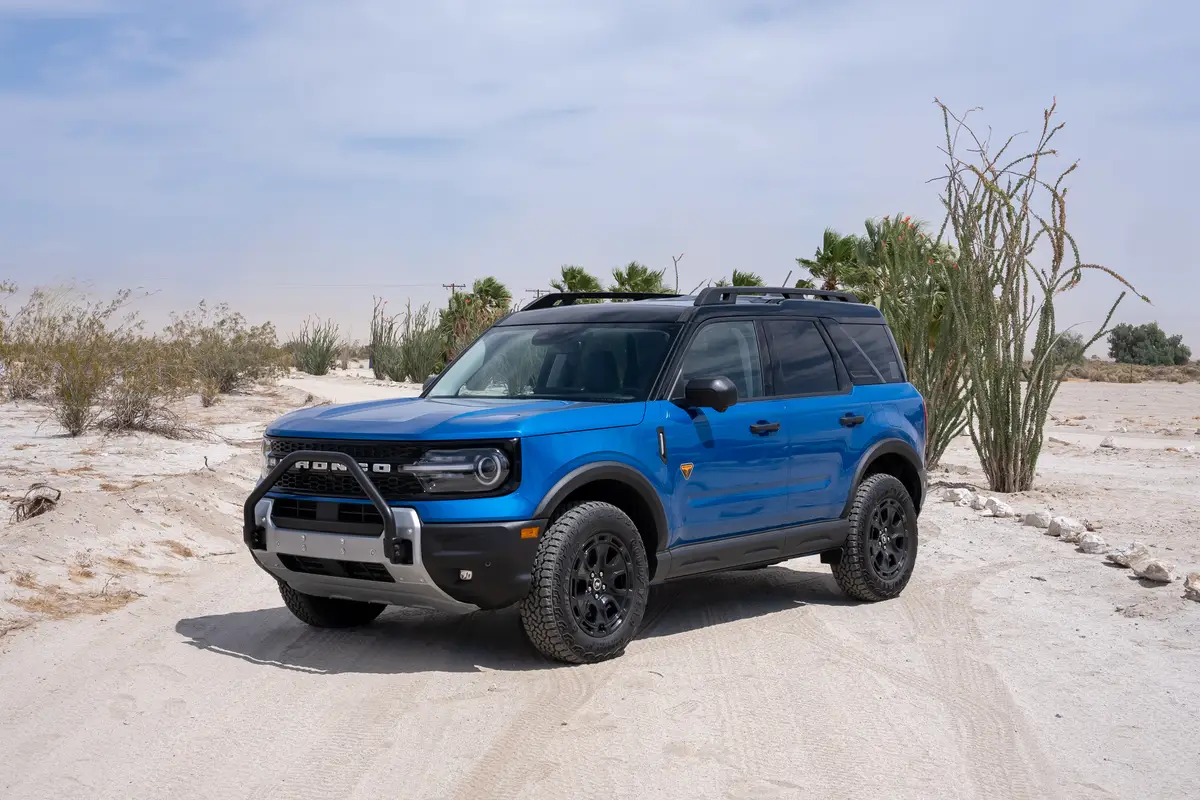Star-Telegram.com's view
The completely redesigned Pontiac Vibe compact crossover wagon will start at $15,895 (including $585 freight) when it goes on sale in February, General Motors says.
One of the best alternatives to the larger, less fuel-efficient SUVs on the market, the Vibe offers both utility and economy in a stylish package that helps make consumers feel good about downsizing to cut their rising fuel bills.
The base price brings the front-wheel-drive version, but the all-wheel-drive model also will be offered in the new Vibe lineup, with a beginning price of $19,495, the automaker announced.
And for those who want the sportiest version, the performance-oriented GT model also returns, carrying a base price of $19,895.
“Our goal with the new Vibe was to enhance its style and performance without sacrificing functionality and fuel economy,” Pontiac marketing director Craig Bierley said in announcing the prices.
“Every Vibe model now comes with a bold new look, increased engine power and a host of standard safety features, but still gets up to 35 miles per gallon.”
Under the hood of the base model is a 1.8-liter inline four-cylinder engine, mated to a five-speed manual transmission, and a four-speed automatic is optional.
The Vibe essentially is the same car as the Toyota Matrix, which also is completely redesigned for 2009 and will go on sale in February as well. Both are built on the chassis of the current-generation Toyota Corolla sedan.
Toyota and GM jointly own the New United Motor Manufacturing Inc. plant in Fremont, Calif., which builds the Vibe, as well as the Corolla sedan and Toyota Tacoma pickup. The Matrix is built at a plant in Ontario, Canada that also builds Corollas.
NUMMI built its first vehicle – a Chevrolet Nova. This was a version of a Toyota car, not one of the original Chevy Novas from the 1960s and ’70s.
In 1986, the Fremont plant began producing the Corolla, and in 1988, the Geo (later Chevy) Prizm, a virtual clone of the Corolla. The plant added the Tacoma in 1991, and the Vibe in January 2002 (after production of the Prizm ended in December 2001).
There was speculation that the Vibe would be discontinued after 2008 as the new Matrix came to market, but Pontiac affirmed continuation of the car with this week’s introduction.
Sales of the Vibe and Matrix dropped somewhat over the past two years, but are on the rise again as gasoline price have spiked.
Smaller crossover wagons such as these are increasingly taking the place of the larger SUVs that were popular during the past 15 years.
Toyota gave journalists a preview of the Matrix in October in Cary, N.C., where Toyota marketing manager Tim Morrison said the vehicle has “the body of a five-door hatchback and the soul of a sports car.”
Both the Vibe and Matrix come with the same 132-horsepower, 1.8-liter, inline four-cylinder engine that powers the new Corolla sedan.
The midlevel and top-of-the-line models, though, come with the 2.4-liter inline four-cylinder engine that is standard in the base Camry sedan. It’s rated at 158 horsepower and 162 foot-pounds of torque.
Upgrades for the top models include leather interior, a rear spoiler, a sport suspension, electric power steering, and 17-inch alloy wheels.
The midlevel model in both lineups is the only one to come with all-wheel drive. This is great for wet and snowy roads, of course, but it’s also a performance feature that helps the car handle better even on dry pavement or gravel and dirt roads.
While the Vibe is a Matrix underneath, GM redesigned the exterior somewhat. It has a signature Pontiac grille and other distinct features.
The Vibe’s interior also was given a different design, with lots of Pontiac flavor.
Toyota says the Matrix “helped redefine the concept of a crossover utility vehicle,” and to a certain extent that is a valid point.
Before Toyota recently began calling the Matrix a crossover, it had been marketed as a small wagon.
Crossovers have become the rage over the past three years, automakers with small wagons and hatchbacks have begun to refer to these vehicles as crossovers, which essentially are car-based sport utility vehicles.
Such a label on the Matrix and Vibe underscores the argument that many of the new so-called crossovers are really just wagons.
Either way, some consumers are now seeing these new small family haulers as the perfect replacement for the larger, truck-based SUVs.
“The Matrix concept was based on blending the functionality of an SUV [and] the style, image and performance of a sports car with the affordability of a subcompact sedan,” Morrison said.
Blurring the line between cars and crossovers, Matrix designers “focused on greater exterior coupe-like styling” Morrison said.
“It was made wider with a lower stance than the current model, while maintaining its interior space,” he said.
“The result is a sporty, dynamic shape that contains room for five people to ride in comfort.”
Matrix S and XRS models come with front and rear underbody spoilers and large mesh fog lights. A rear deck-lid spoiler is included on the XRS.
Because the car is slightly lower, the seats were lowered so there was no loss of headroom, but the cabin has the same space as that of the previous model.
Among new interior features are a three-spoke steering wheel, sport front bucket seats, and a high-efficiency climate-control system with better heating and cooling and larger vents, but reduced power consumption.
Uplevel models come with a leather-trimmed steering wheel that has controls for the audio system. A hand-free Bluetooth phone connection will be optional.
For safety, there will be front seat-mounted side air bags on all Matrix and Vibe models, along with roof-mounted side-curtain air bags for both rows of seats. Active headrests are standard on the front seats, and a tire-pressure monitoring system comes on all versions.
Electronic stability control and traction control are standard on the top model, but optional on the base and midlevel versions. This is a mistake, though. These important safety features should be standard across the line.
Japanese rival Honda does not limit such features to uplevel models of its vehicles; that company’s “safety for everyone” initiative makes stability control and other safety gear standard across the line.
Base and midlevel models of the Matrix and Vibe come with front disc/rear drum brakes, and the antilock braking system is standard. XRS and Vibe GT models come with four-wheel disc brakes with ABS.
Available on midlevel and top models with the 2.4-liter engine is a new five-speed automatic transmission – the same one used in the Camry.
Toyota says the XRS can accelerate from zero to 60 mph in 8.1 seconds, which is not exactly sports car performance. But it is impressive for a small crossover-style family vehicle.
EPA fuel-economy ratings are 27 miles per gallon city/35 highway for the 1.8-liter engine with either the manual or automatic transmission.
Models with the 2.4-liter engine are rated at 22 city/29 highway with the manual gearbox, and 22/30 with the automatic.
No prices have been announced yet for the Matrix, but the 2008 model ranges from $15,510-$17,820 (plus freight).
The automotive columns of G. Chambers Williams III have appeared regularly in the Star-Telegram since 1995. Contact him at chambers@star-telegram.com.
The vehicle has ‘the body of a five-door hatchback and the soul of a sports car.’ – Tim Morrison, Toyota marketing manager
Latest news



